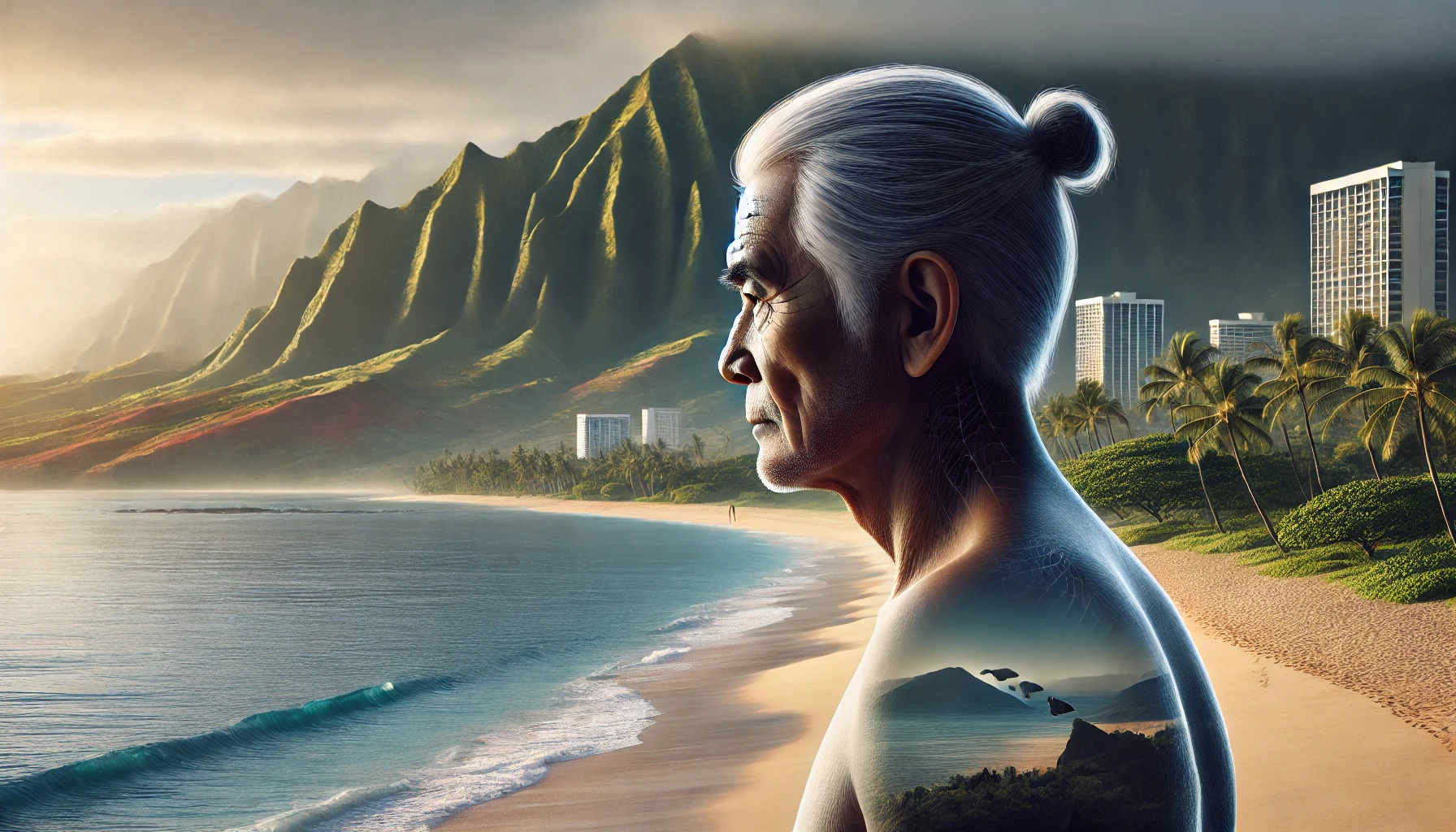Health News
accelerated aging, aging study hawaiians, dna methylation aging, epigenetics hawaii, hawaiian health policy, health disparities hawaii, health disparities research, lifestyle and health, lifestyle factors aging, native hawaiians aging faster, native hawaiians biological age, native hawaiians chronic disease, native hawaiians dna, native hawaiians health, physical activity and aging, socioeconomic status and health
Unveiling the Health Risks: New Study Shows Accelerated Aging Among Native Hawaiians
A groundbreaking study by the University of Hawaiʻi has revealed that Native Hawaiians experience accelerated biological aging compared to other ethnic groups. This accelerated aging is linked to lifestyle factors such as diet, exercise, and socioeconomic status, highlighting the importance of addressing health disparities through improved health policies and community initiatives.
The research suggests that the biological aging of Native Hawaiians surpasses their chronological age, meaning their bodies are aging faster than what their birth year might suggest. This has significant implications for public health and offers a glimpse into the underlying causes of health inequalities in the region.
Biological Age vs. Chronological Age
Typically, a person’s age is associated with the year they were born, known as their chronological age. However, a recent study published in the Journal of the American Medical Association suggests that biological age—the rate at which the body deteriorates at a cellular level—might be more indicative of one’s health. Biological aging takes into account factors like diet, exercise, occupation, and education.
Researchers from the University of Hawaiʻi at Mānoa have found that Native Hawaiians are aging faster biologically than White and Japanese American residents. This accelerated aging is influenced by environmental conditions such as socioeconomic status, revealing that living in poorer neighborhoods is strongly associated with quicker biological aging. However, certain lifestyle choices can mitigate these effects.
“We discovered that individuals who lived in economically disadvantaged neighborhoods but engaged in higher levels of physical activity, had better educational attainment, and followed healthier diets tended to have closer-to-normal biological aging,” explains Alika Maunakea, the lead author of the study and a professor of epigenetics at the John A. Burns School of Medicine.
DNA Methylation and Aging
The researchers studied DNA methylation, a process that controls gene activity and can indicate a person’s biological age. This type of epigenetic marker is used to determine whether someone is aging faster or slower than their actual years. Faster biological aging can signal underlying health problems, including a higher risk for chronic diseases like diabetes, heart disease, and certain cancers.
The study analyzed DNA from 376 participants as part of the UH Cancer Center’s multiethnic cohort. The findings highlight that Native Hawaiians are more susceptible to diseases associated with health disparities, including an earlier onset of diabetes, cardiovascular disease, and other chronic illnesses. Additionally, this group experiences the highest all-cause mortality rates in Hawaiʻi.
Lifestyle Factors and Health Disparities
The study points to significant public health implications, with socioeconomic status playing a key role in accelerated aging. Living in areas with low resources, poor access to healthcare, and limited opportunities for healthy living all contribute to worse health outcomes. Yet, the research shows that adopting healthier lifestyles can counteract some of these risks.
“Even though many Native Hawaiians live in poorer neighborhoods, our research shows that improving diet, physical activity, and education can help reduce the pace of biological aging,” says Maunakea. “These individual-level lifestyle changes can have a profound effect on health outcomes.”
Programs such as MAʻO Organic Farms in Waiʻanae, a region that struggles with socioeconomic disparities, have been shown to promote healthier lifestyles. Community-based initiatives that focus on improving nutrition and increasing physical activity can make a significant difference in the health of vulnerable populations.
Neighborhood and Environmental Factors
Another critical aspect of the study is the impact of environmental factors, such as the neighborhoods where people live. While these factors can be difficult to change, the study emphasizes that improving individual lifestyle habits can have a protective effect on health.
“We cannot always control the environment we live in, but what we eat, how we move, and the level of education we attain are within our control,” explains Maunakea. “This research shows that making these positive changes can slow the rate of biological aging, even in the face of adverse conditions.”
For Native Hawaiians, this study underscores the importance of addressing the broader social determinants of health, such as improving access to education and healthcare, to combat the accelerated aging and health disparities they face.
The Personal Connection to Health Disparities
For Maunakea, the findings of the study are personal. As a Native Hawaiian born and raised in Waiʻanae, he is deeply connected to the community he studies.
“To me, this research highlights the importance of understanding how lifestyle choices directly impact our health,” he says. “Being Native Hawaiian doesn’t mean we’re destined for illness. Our data clearly show that living healthier can slow down aging and reduce the risk of disease.”
The study also reveals that healthier lifestyles are associated with lower BMI and a reduced risk for diabetes. The results bring hope to Native Hawaiian communities, as they demonstrate that adopting healthier habits can improve longevity and overall well-being, despite environmental and economic challenges.
Implications for Health Policy
The findings from this study are expected to influence public health strategies, particularly in regions with significant health disparities. Maunakea and his team hope the research will lead to the development of new policies and community programs aimed at improving the health of Native Hawaiians and other vulnerable populations.
“Ultimately, this research provides a path forward for addressing the health disparities in our community,” Maunakea concludes. “By focusing on education, nutrition, and physical activity, we can make lasting improvements to the health of Native Hawaiians and ensure that future generations have the opportunity to live longer, healthier lives.”
The accelerated aging of Native Hawaiians serves as a reminder that while genetic factors play a role in our health, lifestyle choices and environmental conditions have a significant impact. Through targeted health policies and increased community support, we can reduce these health disparities and promote better outcomes for everyone.



